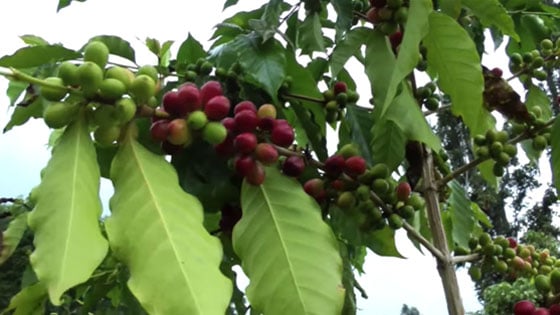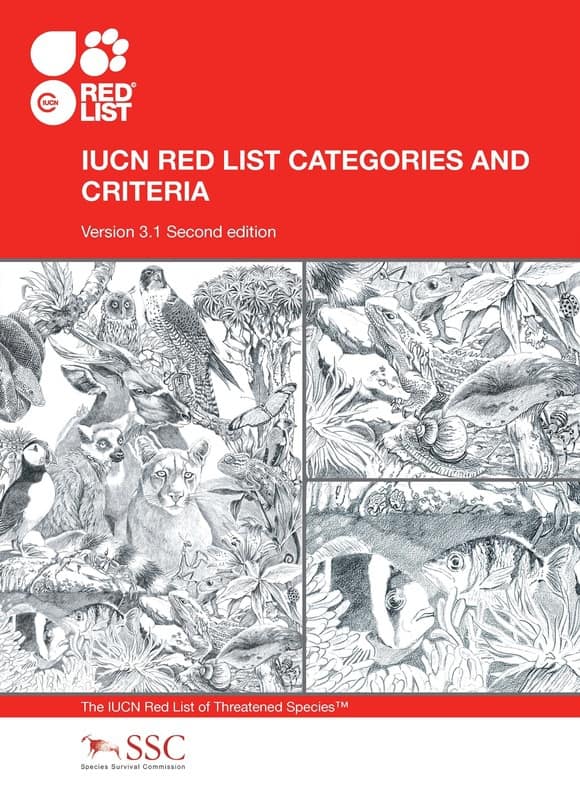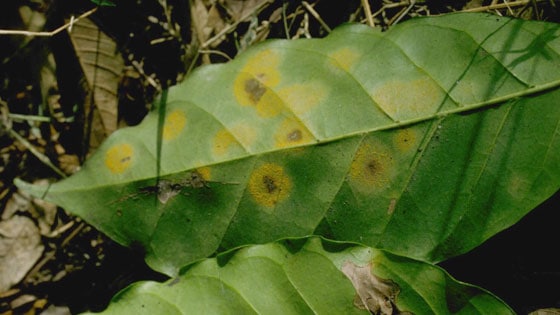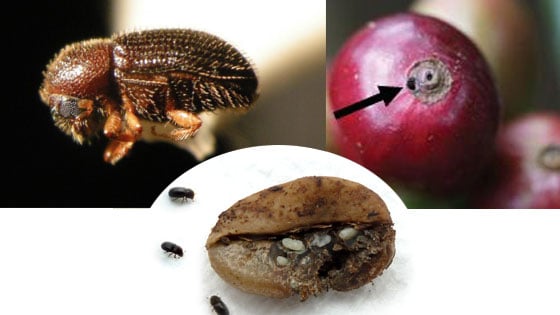
There have been a few recent, high-profile articles going around our newsfeeds warning that coffee is going extinct. But is it? Being a scientific guy, a bit of an environmentalist, and an avid coffee drinker, I decided to do some research. Here is what I found.
In short: No, coffee is not on the verge of extinction. The quoted study found that some species of “wild coffee” were vulnerable due to having a small number of trees, having small growing regions, and being subject to the effects of climate change.
I am not saying that there is no cause for concern. However, in this day and age, it is important to remember a few key points. Scary headlines lead to clicks, clicks equal advertising revenue, and “everything’s fine” doesn’t “go viral.”
What started the ruckus
In January of 2019, researchers at Royal Botanic Gardens, Kew (Kew Gardens) in southwest London published the results of a study.
High extinction risk for wild coffee species and
implications for coffee sector sustainability
It was a fairly dry, academic paper that sought to codify the ecological state of known coffee species.
It was ostensibly a census of the 124 species of Coffea (I wrote about it here) known to science. They found that 60% are threatened with extinction. Additionally, 45% of the species are not held in any germplasm collection. A further threat is that 28% are not known to occur in any protected area.
News organizations read the abstract and decided that a more attention-grabbing spin on the story was to ignore the words “wild coffee species” and focus on the word “extinction.” So, we got headlines like this:
CNN
The world’s most popular coffee species are going extinct. And scientists say we are to blame
Forbes
Most Coffee Species At Risk Of Extinction Due To Climate Change
USA Today
Coffee extinction: Global warming threatens top coffee species
What the study actually found
Now, don’t get me wrong; global warming is a thing and the threats to coffee due to changes in our climate are real. As I explained before and you probably already knew, the coffee we drink is made from the dried and roasted seeds of the fruit of the coffee tree (technically it’s a shrub, but you get the idea). As you are aware, trees (or shrubs, for that matter) do not have the ability to move to better locales when their environment becomes less than hospitable. This alone is cause for concern. To be fair, so would walking trees.
The authors of the study applied the standards of the International Union for Conservation of Nature’s Red List of Threatened Species (www.iucnredlist.org) to each of the 124 Coffea species. Their goal was to analyze gaps in germplasm collections and note which coffees were growing in protected areas. In short, they wanted to see how “at risk” each of the species is. The results for the vast majority of them were not good.

IUCN Red List
It is key to note that this study is an analysis by species. Each of the species was put through the IUCN Red List categories and criteria and scored. A PDF of the 108-page document outlining the process can be downloaded here. It is a very methodical system that clearly notes trouble areas.
Cultivated coffees
A second thing to remember is that not all species are treated and valued equally in the marketplace. Of the 124 species of coffee, only 3 of them are cultivated in any significant commercial volume.
Arabica
Arabica (Coffea arabica) accounts for the lion’s share of the coffee grown in the world. 2019 figures from the International Coffee Organization show that Arabica makes up about 73% of global commercial production. Regardless of the actual number, by far it accounts for most of the world’s coffee production. Additionally, almost all of the specialty coffee found in your local café is Arabica.
Robusta
Robusta (Coffea canephora) accounts for nearly all the rest of the coffee grown. It is primarily used in less expensive preground and instant coffees.
Liberica
Due to the devastation of coffee leaf rust in the 19th century, there is one more Coffea species of note. A small swath of the globe encompassing Malaysia, Indonesia, and The Philippines produces and consumes almost all of the Liberica (Coffea liberica) grown. It totals only about 2% of the world’s coffee production.
Wild Coffees
The remaining 121 species are not a factor in commercial coffee production. Their highest perceived value to us comes from their germplasm: the raw material of plant development. Think of it as a “bank” of genetic material. Scientists can access that bank to bring desired characteristics into commercial production. If the germplasm is not protected in growing areas, it could be lost forever. Longterm storage of Coffea is difficult due to its sensitivity to cold temperatures.
Desirable traits
Disease resistance is an obviously useful trait, and some of the wild trees have it. Additionally, higher “bean” yield per tree is also in that “bank.” Drought tolerance and taste improvements are also desirable characteristics that coffee scientists would like to bring to the industry. There are even a couple of recently discovered species that are naturally “decaffeinated.” Clearly, any of these characteristics are of great value. We want them available and that means we must protect this genetic diversity. Importantly, finding out that 60% of these species are at risk does not imply immediate danger. Our morning supply of hot, brown, caffeinated liquid is safe. For now.
Distinct growing areas
The other hazard these “wild” species face, is that they grow in small, often isolated areas without government protection. There may be only a very few trees of some of these species. Additionally, they may only grow on one side of one hill on one island in the Indian ocean. Whenever a species is confined to a geographically or ecologically distinct area, that is a hazard. A change in climate or someone deciding to slash and burn the area for a commercial coffee plantation could eliminate an entire species. This is an important fact and is worth addressing. Remember what happened to the Dodo? They were on one island in the Indian ocean and were just fine until dogs and sailors showed up. Once they were gone, they were GONE.
Risk vs Hazard vs Danger
These words are often used interchangeably, but they have different meanings. They also paint a specific picture in the mind of the reader. Even if the distinctions are not apparent on a conscious level, they are real, as are the emotions they evoke.
A risk is a likelihood that something will cause harm.
A hazard is a source of potential danger.
Danger is the exposure to or the possibility of suffering harm.
Harm is physical or mental damage.
My beef with the reporting about this study is the focus on the “risk of extinction” without spelling out “how much of a risk.” This is useful only in garnering more clicks on the article. Failing to explain what the extinction of these species means in the overall equation does not serve the reader. I guess that is my job now and I gladly share the information.
Threats Due to Climate Change
That being said, climate change is already having effects on coffee growing throughout the world. Shifting weather patterns have made droughts longer and more frequent. For instance, on my farm in Kona, Hawaii, rain patterns shifted significantly, pushing our harvest by a month. Another example, Latin American farms are planting trees at higher elevations as temperatures rise. As there does not seem to be an end in sight for global temperature increases, this seems to be sound agricultural practice. As the former hot growing areas become “too hot” and unsuitable for coffee growing, farmers are going to have to make some difficult choices.
Threats Due to Pests
A warming climate is also increasing the range of pests that can damage coffee. Species with only a small population of trees are more vulnerable due to their limited growing range.
Historical Precedent – Coffee Leaf Rust

In the 1860s, Ceylon (now Sri Lanka), an island off the coast of India, was one of the world’s largest coffee producers. They exported over 100 million pounds of Arabica coffee per year, primarily to England. Enter coffee leaf rust (Hemileia vastatrix) by way of Africa. No one is certain how it arrived, but by 1890, over 90 percent of the lands used for coffee had been abandoned. From there, leaf rust spread to India, Sumatra, and Java with similar results. The devastated coffee industry had to shift production to the Americas where leaf rust had not yet been found. It is only in recent years that coffee growing is showing signs of resurgence in Sri Lanka.
In the 1970s leaf rust was discovered in Brazil and it is now well-entrenched throughout Latin America. Since this is where most of the world’s Arabica is grown, growers are doing what they can to keep it at bay. The next pathogen coming for our coffee is Coffee Wilt disease. It is on the rise, worldwide and threatens Robusta trees. There is no known “cure.”
Personal Story
I had my own experience with climate enhanced pestilence. The Big Island of Hawaii suffered a drought. This drought severely hampered the naturally occurring beneficial fungus found in our orchards. In fact, it almost eliminated it. This fungus keeps one pest under control: The coffee berry borer. The CBB took advantage of the lack of the fungus and the wetter, warmer weather that followed the drought to establish itself on my farm. Those little beetles lay their eggs in the coffee cherries while they are still green and developing. The hatched larvae start munching away. In the end, they have devoured the seed of the coffee cherry. We had no idea it was happening until it was time to pick and process. As I have explained in the past, the seed of the coffee cherry is what we call a “coffee bean.” No seed, no coffee.

The genetic diversity in the fringe coffee species may be useful for combatting this sort of attack on the crop. A similar infestation on a small volume species with no resistance to it could wipe that species out of existence very quickly. This is another reason why those small population species are at risk.
Economic Threats
There are a variety of economic factors that threaten wild coffee species. Often, people look to maximize profit and may not put a significant dollar value on a “unique genetic resource.” One solution to this is to have growing areas that are protected by governments. This can be done in national parks and forest reserves. If individuals will not value these unique species, the governments will have to come up with incentives for landowners to protect them if those species are to survive.
Deforestation
Since coffee tends to be an understory plant, growing in the shade of larger trees, it can be collateral damage during a logging operation. Additionally, the conversion of a forest to a higher use, such as for growing a different crop also threatens the fringe species. Again, the small number of plants and growing locations puts the species at risk.
Market Forces
Simply put, what makes a profit is what gets grown. As you might guess, many of these coffee species are not drinkable as themselves. Perhaps they do not produce fruit and “beans” in sufficient volume to warrant cultivation. This makes them prime candidates to be replaced by “better” varieties. Again, someone or some organization will have to step in to protect them and their genetic diversity.
Conclusion
The threat to diversity in the coffee genome is real. However, it is not as dire as the fear mongers in the media would have you believe. Additionally, there is no immediate danger to the continuity of the coffee supply. It will continue making its way to our cafés and breakfast tables every day. In fact, as of this writing in 2019, coffee prices have been low for a decade. It is currently selling on the open market at less than $1 per pound. You know, you might want to reread that section on Economic Threats again.
Three main reasons wild coffee species are threatened
- They are only represented in small numbers of trees in geographically small areas. This makes an entire species’s population vulnerable to a single event.
- They are not being saved in germplasm collections. This is due to difficulties in storage and general ignorance of their existence. This means that there is no backup genetic material in case of disaster.
- They are not growing in areas that are protected from development.
To sum up, “60% of coffee species” does not equal 60% of the coffee. In fact, it is a minor amount of coffee when considered on a global scale. The vast majority of coffee species grow wild and are not a factor in commercial coffee production. Their true value is in their genetic traits. They can be bred with existing Arabica and Robusta stock for heartier, healthier, and better-producing trees with better tasting coffee.
And who is going to argue with that?
Be part of Procaffeination Nation!
If you like coffee and fun, join us in our Procaffeination Facebook Group. To be among the first to find out when the book is ready (and probably get a discount, too) sign up for the email list. No spam… I promise.

